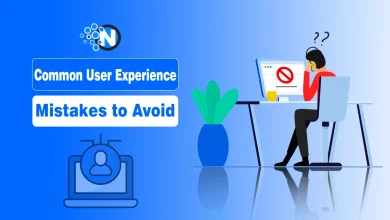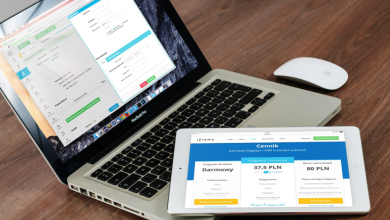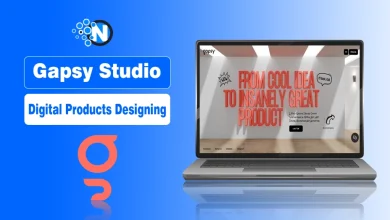Ouch: The Design Platform That Actually Understands E-commerce UX

The illustration space is cursed right now, and everyone’s just acting like this digital chaos is normal. Most platforms are serving up visual disasters where every asset looks like it came from different design dimensions that never attended the same e-commerce optimization workshop. You’re trying to build shopping experiences that don’t make people abandon their carts faster than a bad first date, but end up with libraries that have more personality disorders than a start-up during Black Friday server crashes.
The whole ecosystem operates on main character energy, where every illustration thinks it’s the star of its conversion optimization case study. Someone drops clean checkout flow graphics serving minimal e-commerce vibes, while another designer creates detailed product showcase illustrations giving full marketplace platform energy, and somehow these are supposed to work together without destroying the purchase journey you spent months perfecting through endless A/B testing cycles.
Ouch witnessed this absolute train wreck and said, “bet, we’re about to serve some actual systematic design thinking,” and they weren’t just posting for e-commerce Twitter engagement metrics.
Ouch – Product Design Systems That Don’t Need Crisis Management
Experts at Ouch build complete illustration ecosystems where every piece follows the same UX principles without random style switches, like it’s having a conversion crisis during user research sessions. Each collection maintains consistent interaction language, accessibility compliance, and cognitive load optimization across hundreds of elements because someone finally understood that e-commerce design requires systematic thinking, not just aesthetic mood boards and designer intuition about what “converts well.”

Their component families are sending me because every illustration genuinely belongs in the same shopping universe. Your product discovery flows won’t be beefing with your checkout graphics over visual hierarchy because they all speak the same design language, like they went through the same conversion rate optimization bootcamp and learned from the data instead of just following design trends.
These aren’t illustrations that accidentally look coordinated when you’re surviving on cold brew and sprint deadlines. They’re systematic collections built from shared UX research instead of just hoping design harmony would manifest through Figma plugins and design system documentation that teams reference once, then completely ignore during crunch time.
Technical Implementation That Doesn’t Tank Your Conversion Rates
Real talk—most illustration platforms export assets that make frontend engineers want to delete their entire codebase and become product managers who never touch e-commerce development again. Ouch generates clean, component-ready files with logical design token structures and naming conventions that make sense for scalable e-commerce development instead of creating technical debt that haunts your checkout flow through multiple product releases.
Export formats that won’t destroy your conversion optimization:
- Component-ready SVG with clean mark-up that loads fast and doesn’t kill mobile performance
- Responsive assets optimized for cross-device shopping experiences without breaking mobile checkout
- Vector formats that scale across product touchpoints while maintaining accessibility standards
- File organization following e-commerce design patterns instead of random folder chaos that nobody understands
The technical execution demonstrates understanding of real e-commerce development workflows instead of whatever theoretical paradise other platforms showcase in their marketing case studies. Asset consistency supports design system scalability, which apparently counts as revolutionary innovation when most platforms can’t even maintain consistent product imagery standards.
UX Integration That Actually Serves Conversion Optimization
Ouch serves multiple e-commerce contexts without trying to solve every retail problem and failing spectacularly at fundamental conversion principles. Product teams get cohesive visual systems that enhance shopping journey optimization instead of creating cognitive overhead through visual inconsistency that confuses users and destroys purchase completion rates across the entire funnel.
UX researchers find process graphics and shopping flow illustrations that support user journey documentation without overwhelming core purchase functionality or introducing unnecessary complexity that users absolutely don’t need when they’re trying to buy something. Growth teams maintain conversion optimization consistency across product touchpoints without their assets looking like they were designed by different agencies having creative disagreements during cart abandonment analysis sessions.
Development teams appreciate design-system-ready exports that integrate directly into e-commerce component libraries instead of requiring custom pre-processing workflows that slow down feature development and create technical overhead during peak shopping season deployments.
Specialized Collections That Address Real E-commerce Challenges
Ouch curates’ collections targeting specific e-commerce illustration scenarios instead of just throwing random retail themes at users and hoping something resonates with desperate designers facing impossible holiday season deadlines. Interface illustrations cover everything from product catalogue optimization to mobile checkout conversion enhancement. Shopping process graphics provide clear purchase communication without visual complexity that destroys completion rates.
The shopping clipart collection demonstrates its focus on retail user experience and conversion optimization that serves actual business objectives instead of just looking impressive in design portfolio screenshots. These specialized offerings address specific e-commerce interaction scenarios that generic illustration platforms completely ignore while chasing whatever design trends are getting social media engagement instead of solving real conversion challenges.
Product category libraries span retail optimization to marketplace illustration, each maintaining usability heuristics while offering enough conceptual variety for a comprehensive shopping experienceillustration. The curation process prioritizes conversion research insights over artistic experimentation that looks impressive but serves no functional purpose in actual e-commerce interfaces that real customers navigate while making purchase decisions.
Production Quality That Survives Peak Shopping Traffic
Vector illustrations maintain crisp rendering across device ecosystems and screen densities without degrading shopping experience through poor optimization that kills page performance and makes customers bounce faster than a site that takes more than three seconds to load. Colour systems follow WCAG accessibility standards and contrast requirements instead of just looking aesthetically pleasing in designer portfolios that never face real user testing or accessibility compliance audits during actual shopping sessions.
Character representations stay consistent within shopping flows, supporting mental model development through predictable visual language that reduces cognitive load during complex purchase decisions. The artistic execution demonstrates understanding of e-commerce information architecture with thoughtful visual hierarchy, attention guidance, and interaction affordances that serve measurable conversion objectives instead of just satisfying the designer aesthetic preferences.
Quality assurance ensures every asset performs effectively in actual e-commerce environments instead of just looking fire in illustration system documentation that sits unused while developers struggle with implementation during Black Friday traffic spikes.
Product Team Applications That Scale with Business Growth
E-commerce businesses benefit from systematic illustration libraries that support design system evolution without requiring dedicated illustration resources. Most teams can’t budget effectively during rapid scaling phases, when customer acquisition costs are climbing and every conversion point matters. Design system governance becomes sustainable through coordinated visual assets that adapt with product catalogue complexity and customer feedback iteration cycles.
Early-stage teams access professional-quality graphics that enhance brand credibility without hiring specialized illustration talent or accepting visual mediocrity that undermines customer trust and conversion optimization efforts. Product-market fit validation becomes more effective through consistent visual communication that supports user research processes and A/B testing frameworks that actually inform business decisions instead of just confirming designer assumptions.
Growth-stage companies leverage illustration consistency for cross-functional alignment, ensuring product, engineering, and growth teams operate from shared visual vocabularies that reduce miscommunication during feature development and strategic decisions that directly impact customer experience outcomes and revenue metrics.
Content Strategy Driven by E-commerce Analytics
Ouch analyzes usage patterns across e-commerce contexts and creates collections addressing genuine conversion challenges instead of chasing design trends that prove completely irrelevant to shopping behaviour and measurable business objectives. Regular content updates reflect evolving e-commerce design patterns and emerging shopping interaction paradigms that influence customer satisfaction and purchase completion rates.
Customer research findings inform collection development priorities through data-driven decisions that address real e-commerce workflow pain points rather than assumed market gaps that exist only in design agency portfolios and conference presentations that nobody implements in production shopping environments.
Content curation prioritizes e-commerce utility and customer experience enhancement while maintaining visual quality standards that support accessibility requirements and inclusive shopping experiences. The focus remains on illustrations that solve specific purchase communication challenges instead of just looking impressive in design award submissions.
Platform Performance That Supports E-commerce Development
Search functionality returns contextually relevant results through an e-commerce-focused organization instead of algorithmic chaos that wastes designer time during tight development cycles and seasonal launch planning sessions. Asset organization follows shopping experience workflow patterns that align with typical e-commerce illustration processes and conversion optimization requirements.
The platform handles enterprise-scale usage without performance degradation that disrupts design handoff processes or slows down cross-functional collaboration during feature implementation cycles and peak shopping season preparations. File preparation and export workflows are optimized for e-commerce development timelines instead of theoretical perfection scenarios that exist only in platform marketing demonstrations.
Integration capabilities support popular e-commerce illustration tools and version control systems without forcing teams to restructure established development processes for platform compatibility or workflow disruption that impacts release velocity during critical shopping periods.
Reality Check Because E-commerce Teams Need Honest Assessment
Ouch has limitations worth acknowledging for realistic e-commerce planning and resource allocation decisions. While style variety covers most retail design requirements, highly specialized industry needs or unique brand expressions may still require custom illustration development or supplementary visual resources from specialized e-commerce platforms.
Animation capabilities remain limited compared to dedicated motion illustration platforms. Interactive shopping prototype development and micro-interaction design may require additional tools for comprehensive customer experience implementation and complex purchase flow testing scenarios.
Customization boundaries exist for systematic illustration reasons that maintain consistency. Extensive modifications may compromise the design system advantages that make Ouch valuable for e-commerce coherence and team collaboration efficiency across development cycles.
Strategic Value for E-commerce Operations
Ouch addresses visual consistency across shopping features and customer touchpoints without requiring extensive design resources that most e-commerce teams lack during scaling phases when customer acquisition costs demand maximum conversion efficiency. The systematic approach supports scalable design operations that function effectively in rapid iteration contexts and seasonal demand cycles.
The platform delivers functional design solutions without exaggerated capability claims. Systematic illustration libraries provide measurable time savings and quality improvements that justify subscription costs through improved development velocity and demonstrable customer experience outcomes.




